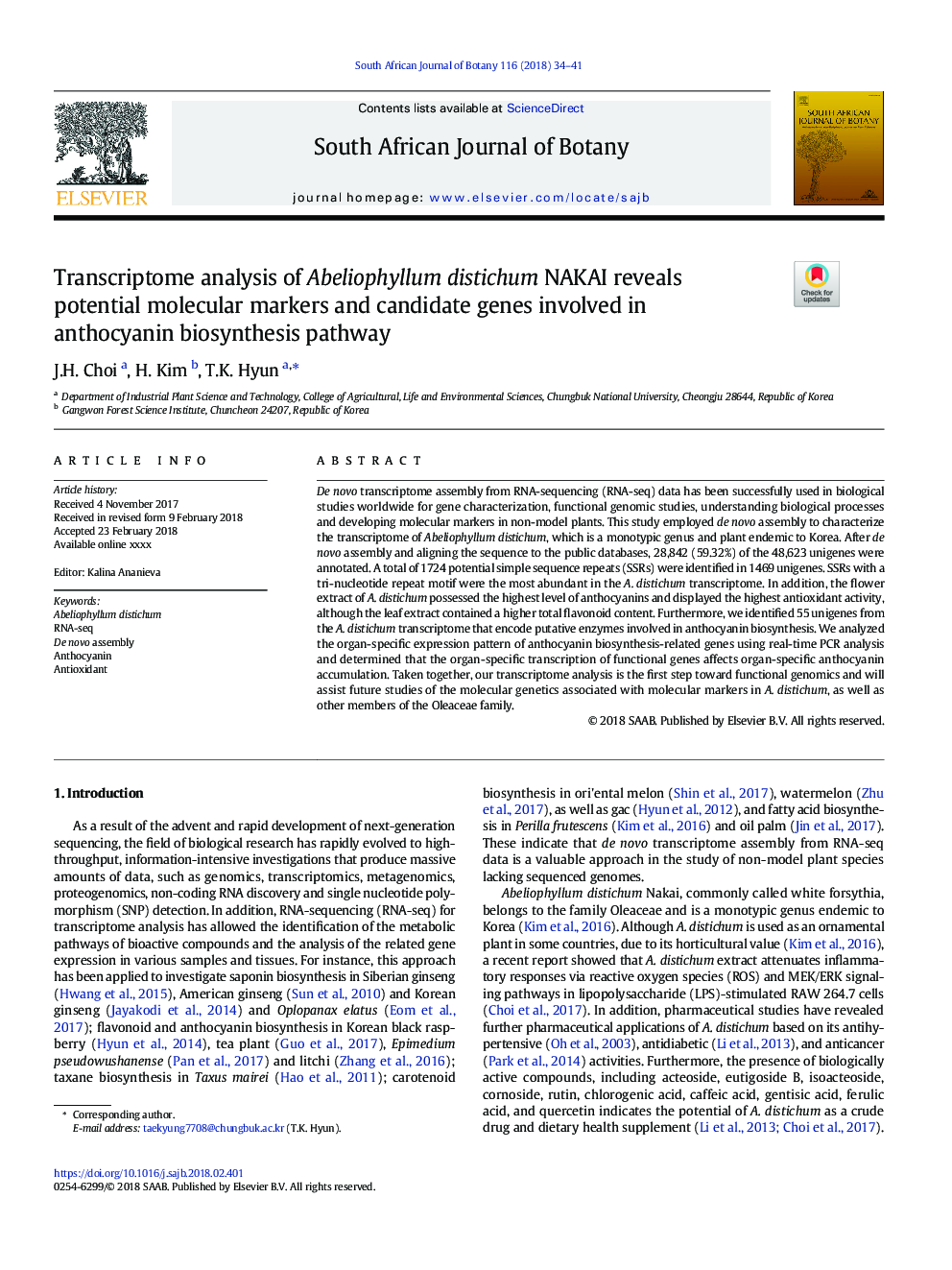| Article ID | Journal | Published Year | Pages | File Type |
|---|---|---|---|---|
| 8882250 | South African Journal of Botany | 2018 | 8 Pages |
Abstract
De novo transcriptome assembly from RNA-sequencing (RNA-seq) data has been successfully used in biological studies worldwide for gene characterization, functional genomic studies, understanding biological processes and developing molecular markers in non-model plants. This study employed de novo assembly to characterize the transcriptome of Abeliophyllum distichum, which is a monotypic genus and plant endemic to Korea. After de novo assembly and aligning the sequence to the public databases, 28,842 (59.32%) of the 48,623 unigenes were annotated. A total of 1724 potential simple sequence repeats (SSRs) were identified in 1469 unigenes. SSRs with a tri-nucleotide repeat motif were the most abundant in the A. distichum transcriptome. In addition, the flower extract of A. distichum possessed the highest level of anthocyanins and displayed the highest antioxidant activity, although the leaf extract contained a higher total flavonoid content. Furthermore, we identified 55 unigenes from the A. distichum transcriptome that encode putative enzymes involved in anthocyanin biosynthesis. We analyzed the organ-specific expression pattern of anthocyanin biosynthesis-related genes using real-time PCR analysis and determined that the organ-specific transcription of functional genes affects organ-specific anthocyanin accumulation. Taken together, our transcriptome analysis is the first step toward functional genomics and will assist future studies of the molecular genetics associated with molecular markers in A. distichum, as well as other members of the Oleaceae family.
Related Topics
Life Sciences
Agricultural and Biological Sciences
Agronomy and Crop Science
Authors
J.H. Choi, H. Kim, T.K. Hyun,
